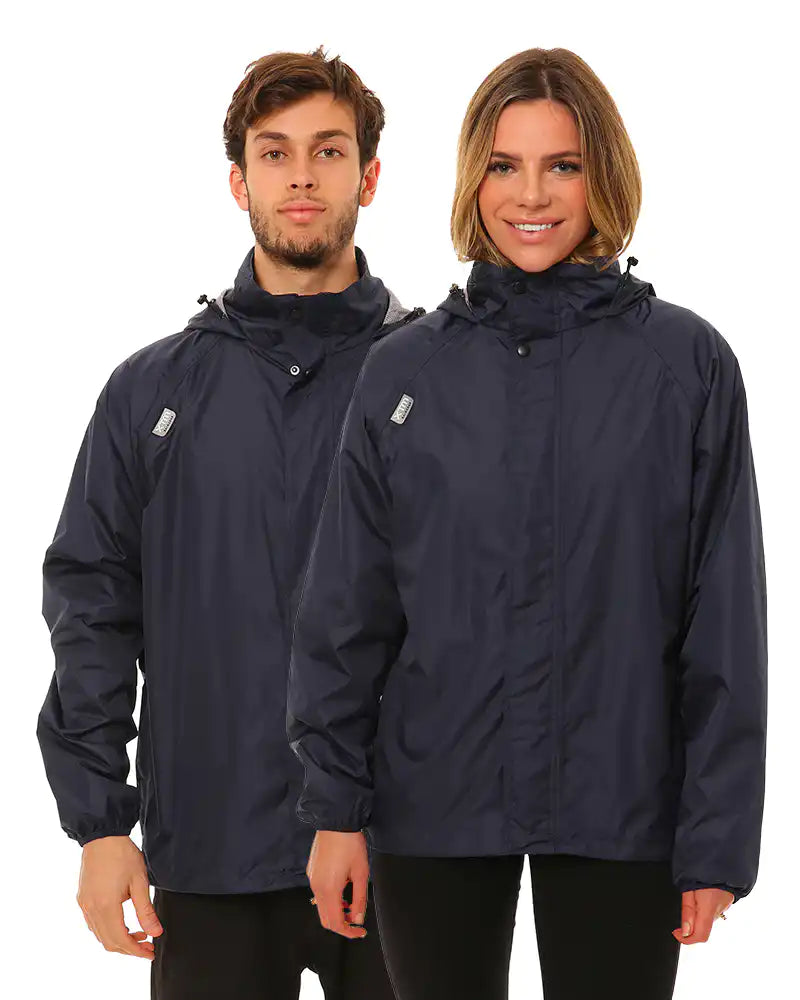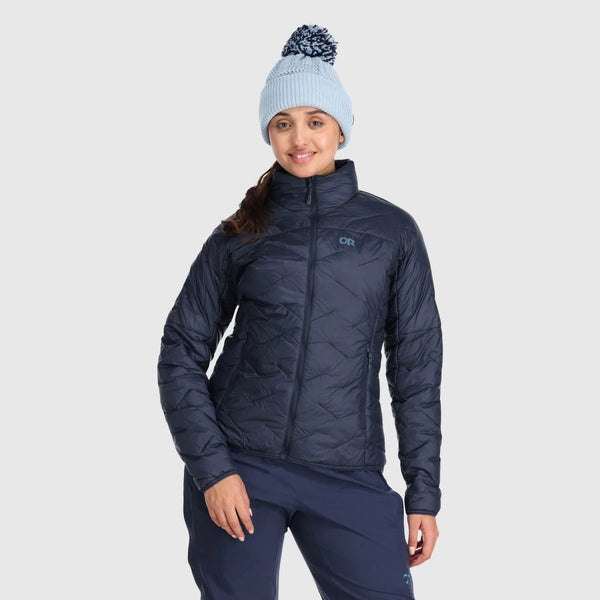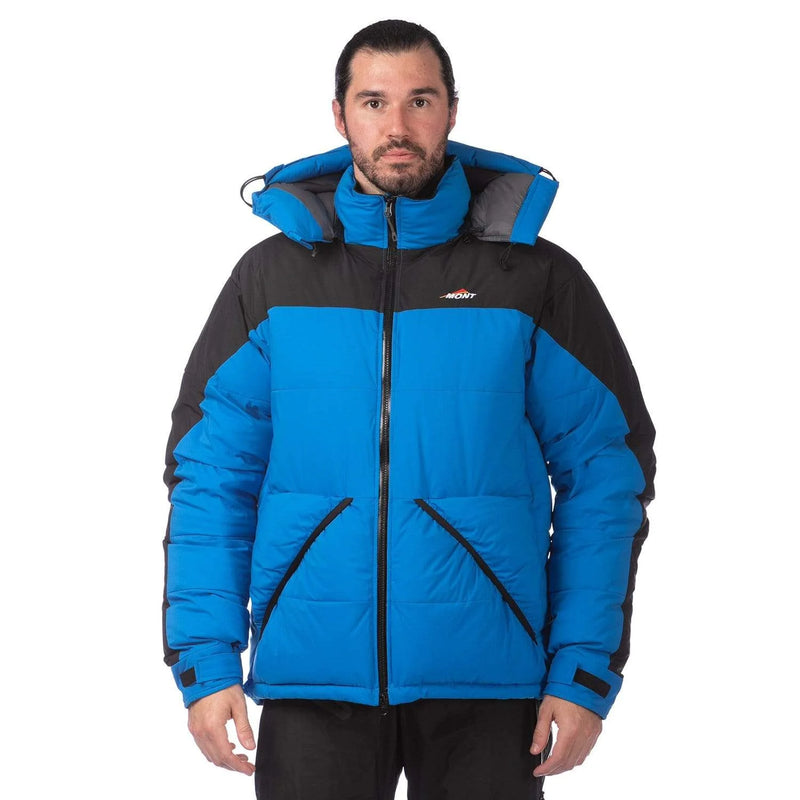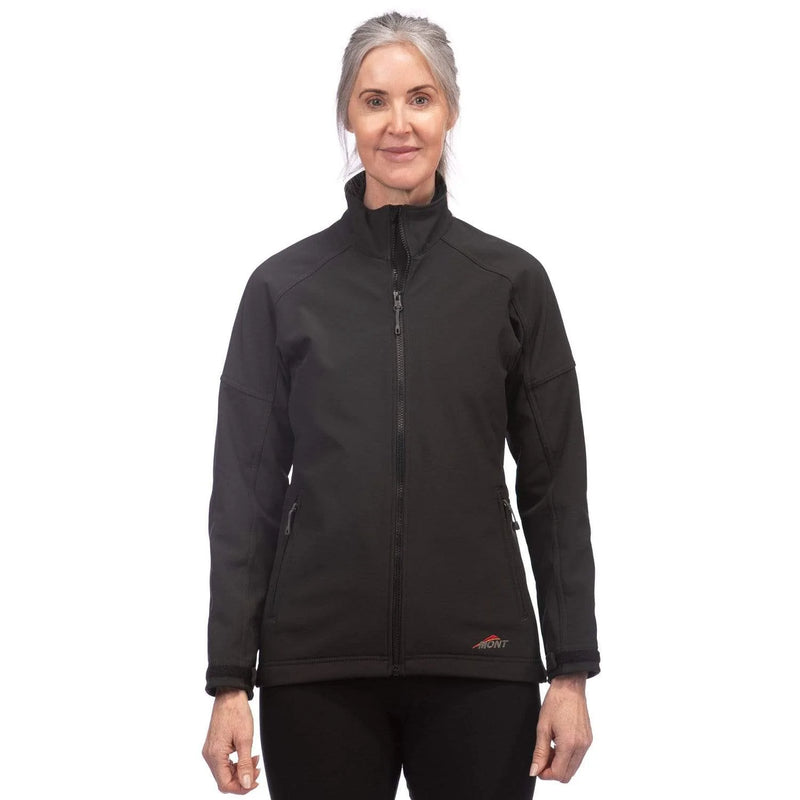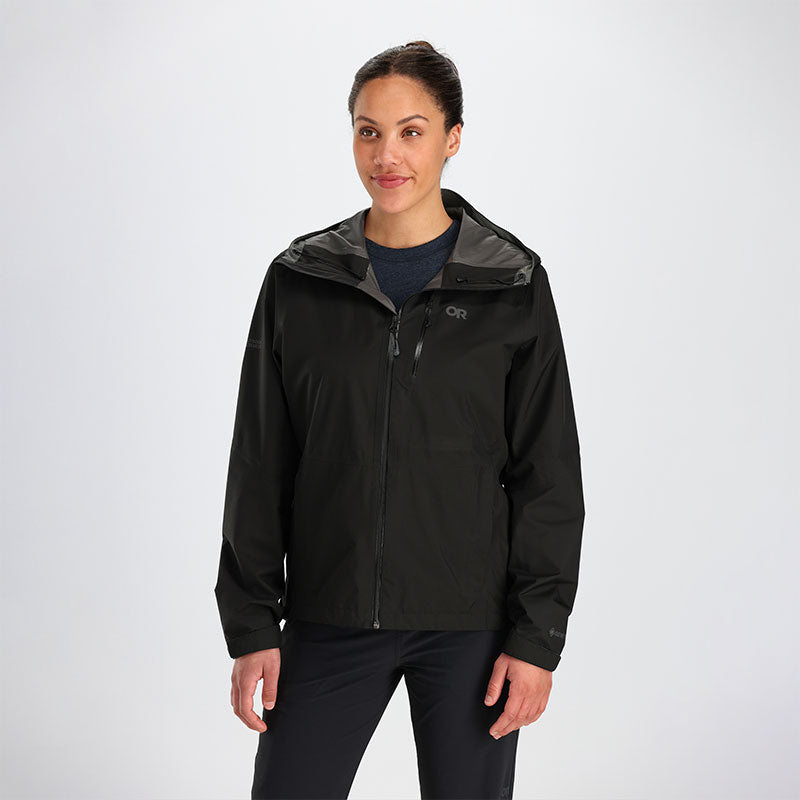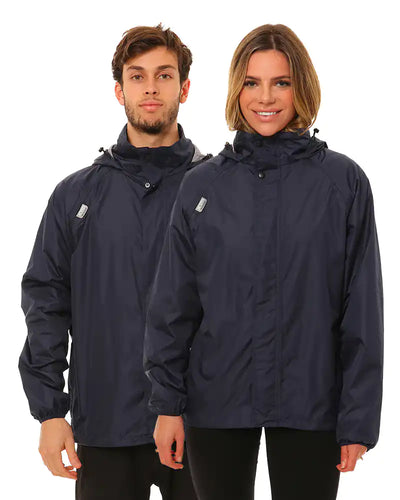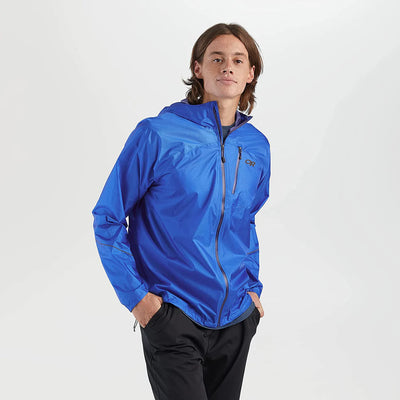

How to Choose a Hiking Jacket?
A good hiking jacket is much more than fabric and zippers—it’s a shield against the elements and a game-changer on the trail.
The right jacket protects against the wind, helps regulate your body temperature, and allows your skin to breathe. Together, these features can significantly enhance both your comfort and performance during hikes.
As for those wondering if their ski jacket is suitable for hiking, we advise against it. Ski jackets are often too warm and lack sufficient breathability for the fluctuating temperatures and intensities encountered on hikes. Additionally, their bulk and weight can become cumbersome in your pack.
In case you have urgency, here is what you will read in this article.
Table of Contents:
Types of Hiking Jackets
With a market flooded with options, how do you navigate the sea of waterproofing, breathability, and fit to find your ideal hiking jacket match? We've simplified the selection process into five key categories to ensure you understand your options.
Note: For more detailed insights into materials and construction layers, please refer to later sections in this article.
1- Packable Rain Jackets
A 'just-in-case' layer for sudden weather changes. Typically, these jackets sacrifice breathability and temperature regulation to prioritise waterproofness. They offer a quick, lightweight layer of protection when the weather changes suddenly.
In the realm of packable rain jackets, not all are created equal. Aim for jackets with a minimum waterproof rating of 5,000 mm and a breathability measure of around 3,000 g/m²/24 hours to guarantee a decent performance. Beware of options that don’t disclose these ratings.
Our pick within this category has to be XTM’s Stash II Unisex Rain Jacket.
Upping the game in terms of functionality, lightweight breathable jackets are the go-to for highly-active pursuits. The clear distinction is that they allow moisture to escape from underneath, which is key to avoiding rapid cooling, especially when your base layer is soaked with sweat.
These jackets are perfect for a variety of conditions—from hikes on exposed ridges under the sun or during the cooler times of the day to challenging treks where they excel in maintaining a stable internal climate amidst biting winds, all while importantly packing down to almost nothing. When choosing this type of jacket, look for options with microporous liners like Gore-Tex or Pertex, or hydrophilic membranes such as Mont’s Hydronaut Ultra, which let sweat out while blocking rain.
Our tried and true favourite within this category is Outdoor Research’s Helium Jacket Men's and Women's.
Insulated jackets come in three main weights—lightweight, midweight, and heavyweight—which broadly cover all possible environmental conditions and individual needs.
When it comes to insulation, high-loft down provides unparalleled warmth in dry conditions, while synthetic fill ensures effective insulation even when damp. The fill power of down indicates its thermal efficiency, with higher values offering more warmth for less bulk.
A staff favourite at K2 would have to be Outdoor Research’s Superstrand LT Women's and Men's.
For more intense expeditions, a heavyweight option like the infamous Mont Icicle would be your go-to.
Softshell jackets sit nicely between lightweight insulating pieces and waterproof hardshells, offering breathability, a high level of comfort thanks to their stretchy fabric, and moderate protection for a variety of cooler outdoor activities.
Perfect for conditions that don't warrant a heavy-duty hardshell but need sufficient wind resistance and water repellency against mild to moderate weather, their ability to breathe and reduce the need for multiple layers makes them great for those seeking efficiency and versatility.
We love the Rab Vapour-Rise Summit Men's and Women's Hooded Jackets for their versatility and breathability.
These are the most adaptable garments for combating rain, wind, and snow by accommodating mid-layers as needed. They offer unparalleled waterproof and windproof protection, balancing strong defense with breathability for comfort across diverse climates.
While one jacket may not cover every situation perfectly, a high-quality, well-fitted jacket can come very close. Choosing a fit that allows for either additional layers or none, is essential in tailoring the use of the jacket to the anticipated conditions and maximizing the jacket's performance.
1- Packable Rain Jackets
A 'just-in-case' layer for sudden weather changes. Typically, these jackets sacrifice breathability and temperature regulation to prioritise waterproofness. They offer a quick, lightweight layer of protection when the weather changes suddenly.
In the realm of packable rain jackets, not all are created equal. Aim for jackets with a minimum waterproof rating of 5,000 mm and a breathability measure of around 3,000 g/m²/24 hours to guarantee a decent performance. Beware of options that don’t disclose these ratings.
Our pick within this category has to be XTM’s Stash II Unisex Rain Jacket.
Upping the game in terms of functionality, lightweight breathable jackets are the go-to for highly-active pursuits. The clear distinction is that they allow moisture to escape from underneath, which is key to avoiding rapid cooling, especially when your base layer is soaked with sweat.
These jackets are perfect for a variety of conditions—from hikes on exposed ridges under the sun or during the cooler times of the day to challenging treks where they excel in maintaining a stable internal climate amidst biting winds, all while importantly packing down to almost nothing. When choosing this type of jacket, look for options with microporous liners like Gore-Tex or Pertex, or hydrophilic membranes such as Mont’s Hydronaut Ultra, which let sweat out while blocking rain.
Our tried and true favourite within this category is Outdoor Research’s Helium Jacket Men's and Women's.
Insulated jackets come in three main weights—lightweight, midweight, and heavyweight—which broadly cover all possible environmental conditions and individual needs.
When it comes to insulation, high-loft down provides unparalleled warmth in dry conditions, while synthetic fill ensures effective insulation even when damp. The fill power of down indicates its thermal efficiency, with higher values offering more warmth for less bulk.
A staff favourite at K2 would have to be Outdoor Research’s Superstrand LT Women's and Men's.
For more intense expeditions, a heavyweight option like the infamous Mont Icicle would be your go-to.
Softshell jackets sit nicely between lightweight insulating pieces and waterproof hardshells, offering breathability, a high level of comfort thanks to their stretchy fabric, and moderate protection for a variety of cooler outdoor activities.
Perfect for conditions that don't warrant a heavy-duty hardshell but need sufficient wind resistance and water repellency against mild to moderate weather, their ability to breathe and reduce the need for multiple layers makes them great for those seeking efficiency and versatility.
We love the Rab Vapour-Rise Summit Men's and Women's Hooded Jackets for their versatility and breathability.
These are the most adaptable garments for combating rain, wind, and snow by accommodating mid-layers as needed. They offer unparalleled waterproof and windproof protection, balancing strong defense with breathability for comfort across diverse climates.
While one jacket may not cover every situation perfectly, a high-quality, well-fitted jacket can come very close. Choosing a fit that allows for either additional layers or none, is essential in tailoring the use of the jacket to the anticipated conditions and maximizing the jacket's performance.
Factors to Consider when Buying a Hiking Jacket
Choosing the right hiking jacket involves more than just picking a style; it demands a deep understanding of various features that can affect performance and comfort under different conditions. Here’s a structured approach to help you make an informed decision.
1- Size & Fit
The first thing to consider is the fit, as it is the most personal aspect that affects comfort and functionality. Consider the layers you’ll wear underneath:
Regular fitted jackets provide a bit of extra room, ideal for layering clothes needed for warmth. Fitted jackets, on the other hand, snuggly enhance mobility for dynamic activities and are best worn with just a moisture-wicking base layer.
The right fit also must complement your figure for optimal mobility. Test by moving your arms across your body and overhead while wearing the intended layers; if it feels tight, especially around the back and shoulders, size up for better comfort and coverage.
2- Construction of Layers
Each layer design has its own advantages and disadvantages which can make a difference in your decision whether you are after a hardshell or a softshell jacket.
3-layer jackets consist of an outer fabric, a waterproof/breathable middle membrane, and an internal fabric that enhances protection and moisture-wicking. This configuration is ideal for extended activities in demanding environments, maintaining a warm, dry internal climate essential for long treks in colder conditions.
2.5-layer jackets have the same external and middle layers, but replace the inner fabric with a protective coating applied directly to the membrane. This reduces the jacket's weight and bulk, benefiting high-intensity, short-duration activities by enhancing portability and comfort. While these jackets provide less moisture management, their performance is adequate for short activities in which a lighter, less cumbersome jacket is advantageous.
2-layer jackets come with an outer water repellent layer and an inner waterproof layer, and their less technical fabric makes them more affordable.The hardshell versions are usually backed with a separate mesh or nylon fabric to reduce noise. Less breathable and heavier than 3-layer and 2.5-layer jackets, they are good for casual walks in national parks or for everyday use but not suitable for hiking.
3- Material Durability (Face Fabric)
Moving on from the fitting, it's essential to consider the jacket’s outer material (face fabric) and its ability to withstand environmental stresses—especially for those navigating harsh terrain. Here you have two types:
Weather-resistant jackets feature durable, weather-resistant materials, suitable for stand-alone use in mild weather or as the outermost layer in a layering system when facing harsher elements.
Layering Jackets are designed primarily for insulation and are ideal under a robust shell in extreme conditions or alone in milder weather. They focus on breathability and flexibility.
Assess the jacket’s durability by checking the Denier rating for fabric thickness and confirming its waterproof and windproof capabilities. Opt for materials like ripstop nylon, known for its tear-resistant weave, or Diamond Fuse Technology, which enhances durability through a diamond-shaped weave. Look for higher Denier fabrics and protection technologies like Gore-Tex Infinium™ Windstopper®.
4- Waterproofing
Next, waterproofing technology is critical for any hiking jacket in rainy or alpine environments.
Higher-quality waterproofing correlates with price, with high-end jackets employing the most sophisticated versions of technologies like Gore-Tex Pro for unmatched waterproofing and breathability. Also, consider the rigorous sealing of seams (seam-taped) within the garment. A fully seam-taped jacket won't allow moisture to leak in through and will keep you dry even under the harshest downpours.
5- Comfort & Protection Features
With the technical aspects covered, we’ll now shift focus to additional features that enhance comfort and protection:
Comfort Features: Specific features that aid in overall comfort and ease of movement.
a) Smooth Fabrics: Smooth fabrics make for easy layering without bunching or snagging particularly beneficial in variable conditions that require frequent adjustments. It can also minimise friction and irritation during repeated swinging of your arms while hiking.
b) Anatomical Shaping: Anatomical shaping refers to when the jacket conforms to the body’s contour, facilitating easy layering without restricting movement. Also, jackets designed with slimmer fit or elasticated sides can prevent the jacket from catching or rolling up under your pack.
c) Articulated Patterning: This involves strategic placement and structure of the fabric panels themselves, and includes design elements like no-lift gusseted underarms, which permit full range of motion, crucial when climbing or reaching overhead.
d) Pocket Positioning: Pay special attention to the design of hand pockets, as they can greatly enhance comfort while hiking—as seen in jackets like the Arc'teryx Beta AR. Also, make sure the pockets placement allows easy access while wearing a backpack with a hip belt or a climbing harness if necessary.
e) Underarm Vents and Dual Zippers: Also known as pit zips, underarm vents allow for better airflow and reduce sweating under your pack. Dual zippers also achieve this.
Some features to keep elements at bay! Product: Outdoor Research Foray II Jacket
Protection Features: Adjustable and protective features for additional safety.
a) Advanced Adjustability: Adjustable hoods, cuffs, and hems allow you to tailor the jacket to respond to changing weather conditions. Look for hoods with wire visors for enhanced visibility and wind protection.
b) Protective Collars: Neck and collar configurations, such as draft collars, offer added warmth and protection from wind and rain.
c) Length of Jacket: For activities like bushwalking, consider jackets with a mid-thigh length that offers coverage and warmth over a larger area.
d) Activity-Specific Features: Jackets equipped with hidden reflectors can be a lifeline in low-light conditions or when navigating avalanche-prone areas.
Hiking Jacket Suggestions for Popular Hiking Destinations
For Australian hikers, let’s break down some recommendations for several popular trails across different climates and regions, ensuring you’re well-equipped for variable conditions.
Overland Track, Tasmania
Climate: The Overland Track experiences a temperate climate with the potential for cold, wet, and snowy conditions, particularly from late fall through early spring.
Product Suggestion: For this trail, a waterproof hardshell jacket with a breathable membrane like Gore-Tex is essential. It should have sealed seams, an adjustable hood, and sufficient layering space. Pair this with a midweight insulated jacket for the colder months to handle the low temperatures and potential snowfall.
Larapinta Trail, Northern Territory
Climate: The Overland Track experiences a temperate climate with the potential for cold, wet, and snowy conditions, particularly from late fall through early spring.
Product Suggestion: During the day, a lightweight, breathable jacket with UV protection is great to shield you from the intense sun while keeping you cool. Outdoor Research’s Helium Windbreaker would work great. For the evenings, when temperatures can drop sharply and desert winds can be surprisingly harsh and cold, a midweight insulated jacket is necessary to keep you warm and protected.
Bartle Frere Trail, Queensland
Climate: A tropical climate with high humidity and frequent rainfall, especially during the summer months.
Product Suggestion: A lightweight, waterproof, and highly breathable jacket is suitable here. Look for jackets with vents and moisture-wicking capabilities to handle the humidity and rain without overheating.
Mount Kosciuszko, New South Wales
Climate: Conditions on Mount Kosciuszko can vary significantly, ranging from moderately warm summers to cold, windy winters with occasional snowfalls.
Product Suggestion: A versatile layering system is essential to adapt to the changing conditions. For rainy and snowy conditions, start with a durable waterproof hardshell jacket to keep dry. Consider one with a high collar to provide better protection against cold winds and blowing snow. Mont’s Siena pants & jacket (for women) or Austral pants & jacket (for men) are great option here. Add midweight insulation layers as necessary for added warmth. During the winter months, consider a heavyweight insulated jacket to protect against the biting cold winds and freezing temperatures.
Camino de Santiago, Spain
Climate: The climate along the Camino de Santiago can vary significantly depending on the route and the season. Generally, conditions range from cool and wet in the northern regions to warm and dry in the southern parts.
Product Suggestion: A durable, yet lightweight, waterproof jacket is advisable due to the variability in weather. For warmer segments, a jacket with UV protection and good breathability will help manage sun exposure and heat. In cooler, wetter areas, a jacket with a comfortable lining and the ability to layer underneath is beneficial. Packability is key, as the jacket should be easy to carry when not in use. A good option would be Outdoor Research’s Microgravity Ascentshell.
Annapurna Circuit, Nepal
Climate: The Annapurna Circuit features varied climatic conditions ranging from sub-tropical warmth at lower altitudes to freezing alpine conditions at higher elevations. Weather changes can be abrupt and depend significantly on the season.
Product Suggestion: For a long and varied trek like the Annapurna Circuit, a 3-layer waterproof and windproof jacket with a high collar is recommended. Depending on the season, adjust your insulation: lighter for warmer, low-altitude treks and heavier (midweight to heavyweight) for the cooler (spring and winter), higher altitudes.
Patagonia, Chile (Torres del Paine National Park)
Climate: The climate in Torres del Paine is notoriously unpredictable, often shifting rapidly between sunshine, wind, rain, and snow, regardless of the season. Strong winds are a common challenge, especially around the massifs.
Product Suggestion: A durable hardshell jacket with superior waterproofing, windproofing, and a breathable membrane like Gore-Tex Pro is crucial here. It should have a sturdy hood and high collar for protection against sudden weather changes. Pair this with a lightweight synthetic insulated jacket like Mont’s Guide Hoodie for its ability to retain heat even when damp, which is a likely scenario in the wet conditions of Patagonia.
This guide has outlined the essential considerations—from materials and construction to the specific features that enhance comfort and performance.
Ready to gear up for your next adventure? Equip yourself with the right gear and don’t let the weather limit your exploration. Visit our store or browse our online collection to find the perfect hiking jacket that meets—and surpasses—your outdoor needs. Happy hiking!

